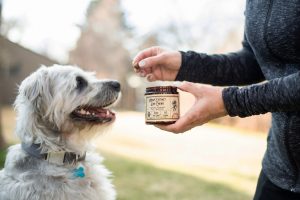Benadryl is one of the most common OTC medications in most countries including the US. It can be found in almost every household. It is usually used to treat allergies, runny nose, sneezing, cough, etc. Dog parents often come up with the question of whether they can give their dogs Benadryl or not. Is it harmful or beneficial for dogs? Is there any different type or formula of Benadryl for dogs? If you are looking for the answers to such questions, keep reading this article.
One thing is for sure, the same medication will behave differently in both humans and animals. Therefore, a good veterinarian advises dog owners to not select and give medicine to their dogs on their own. However, there are few human medicines recommended by vets that you can give to your dog without a probability of a side effect.
Stay on this article if you wish to know the necessary information about Benadryl and dogs as it will remit all your doubts and confusion. Without further ado, let’s get to it:
Table of Contents
What is Benadryl?
Benadryl is an over-the-counter antihistamine medication that contains diphenhydramine. It’s commonly used to relieve symptoms of allergies, such as itching, sneezing, and runny nose. Additionally, Benadryl is known for its sedative effects, making it useful for treating mild insomnia or providing relief from symptoms of the common cold.
Can I Give Benadryl to my Dog?
Benadryl is used for allergy sufferers and it is safe to be used for both humans and animals. There is no harm in giving Benadryl to your dog as it is entirely safe and many veterinarians recommend it to treat dogs with allergies. It is used primarily to treat dermatological allergies in dogs, however, it can be used to treat seasonal, environmental, food, and insect bite allergies as well.
However, you have to be careful about the dosage. The amount of Benadryl will vary from dog to dog according to its size. The best practice is to talk to your vet before giving Benadryl to your dog.
What is the Proper Benadryl Dosage for Dogs?
The right dosage of Benadryl will entirely rely on the size of the dog. A small-sized dog will require a small dosage of the medication and it can be increased according to your dog’s size.
According to “The Merck Veterinary Manual” you can give your dog 2 mg to 4 mg of Benadryl drug per Kg of their weight, distributed two to three times a day.
Recommended Benadryl Dosage for Dogs
| Your Pup's Weight | Recommended Dose |
| 5 lbs / 2.26 kg | 5 mg |
| 10 lbs / 4.5 kg | 10 mg |
| 15 lbs / 6.8 kg | 15 mg |
| 20 lbs / 9 kg | 20 mg |
| 30 lbs / 13.6 kg | 30 mg |
| 40 lbs / 18 kg | 40 mg |
| 50 lbs / 22.6 kg | 50 mg |
| 75 lbs / 34 kg | 75 mg |
| 100 lbs / 45 kg | 100 mg |
| 125 lbs / 56.7 kg | 125 mg |
| 150 lbs / 68 kg | 150 mg |
| 175 lbs / 79 kg | 175 mg |
Still, the exact dosage should be determined by your veterinarian. Always refer to your vet before trying a new medication on your dog because certain dogs are quite sensitive to some medicines. Also, avoid giving Benadryl to pregnant and nursing dogs.
What are the side effects of Benadryl?
There may be certain side effects of using Benadryl more frequently. Such as:
- Drowsiness
- Lethargy
- Dry mouth
- Gastrointestinal upset
- Vomiting
- Diarrhea
- Various allergic reactions
Usually, the side effects of the drug manifest themselves within a couple of hours of giving it, so keep an eye on your dog during that timeframe.
What if I overdosed my dog?
It could be deadly if not taken care of ASAP. First of all, don’t panic and check for the following symptoms:
- Dilated pupils
- Constipation
- Seizure
- Agitation
It is highly recommended to talk to your vet or a local animal poison control center and follow their instructions.
Final Thought:
Benadryl is used to treat allergy symptoms and other ailments. It is a safe and effective medicine that should be used based on the veterinarian’s recommendation. The quantity of the medicine is very important therefore always give the correct dose to your dog. Observe your dog closely for two hours after giving a new medicine to avoid any reaction or negative effects.
In case you have further questions or if your situation is different from that described, you can contact your veterinarian.










